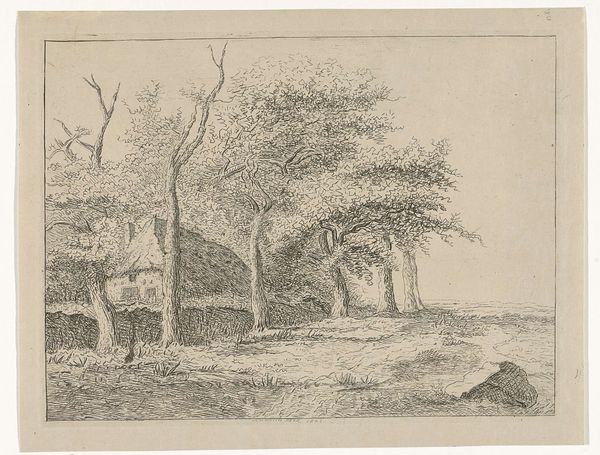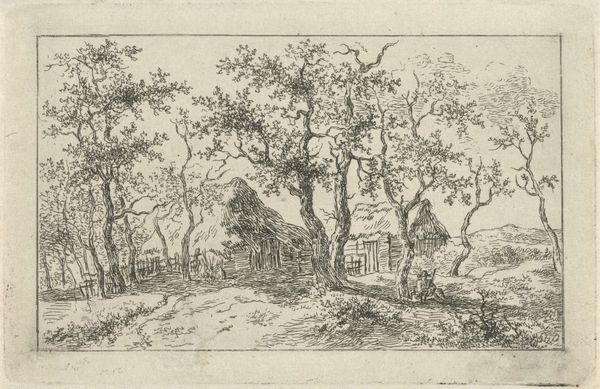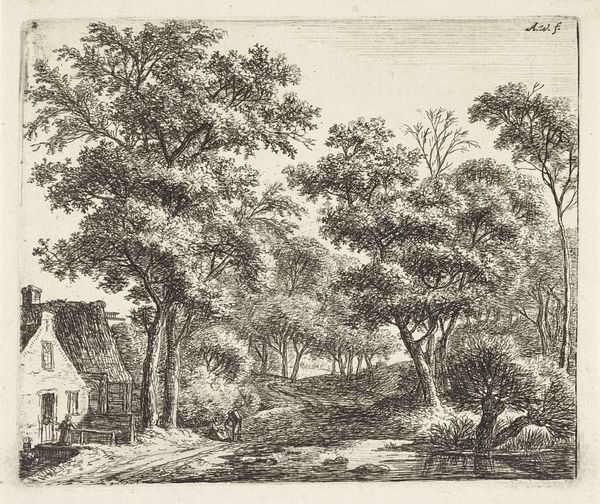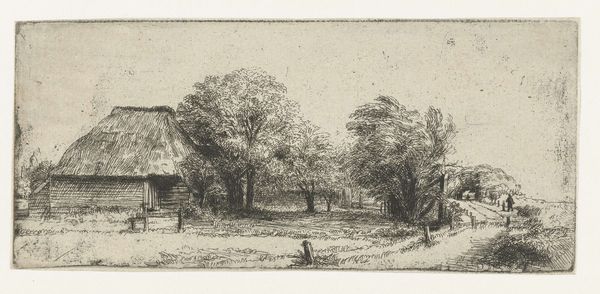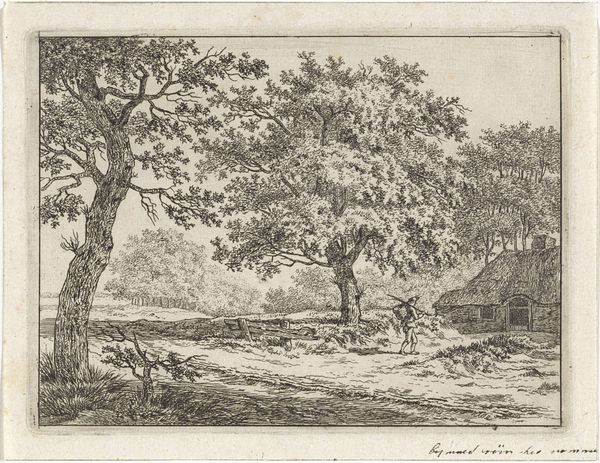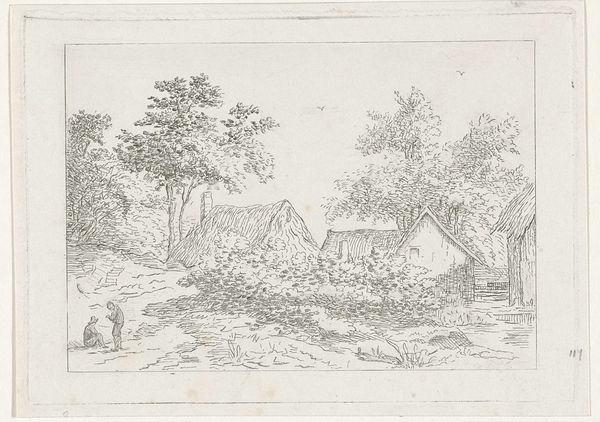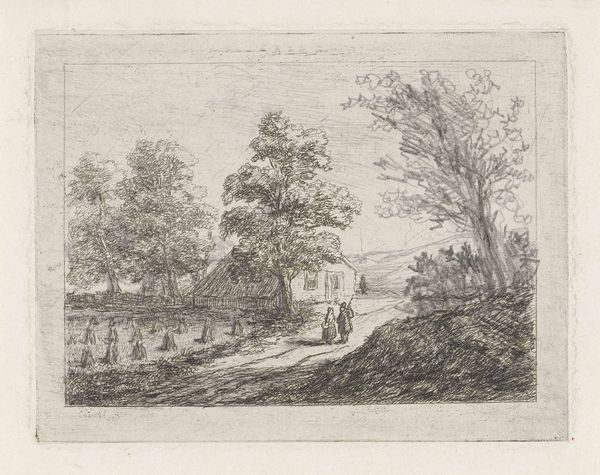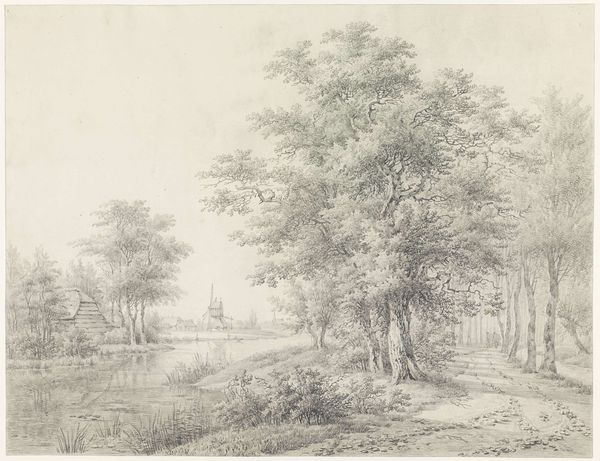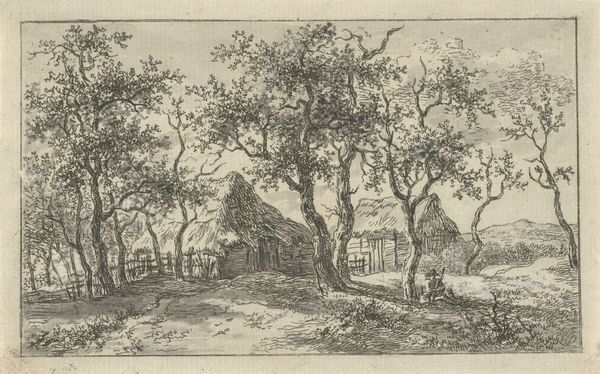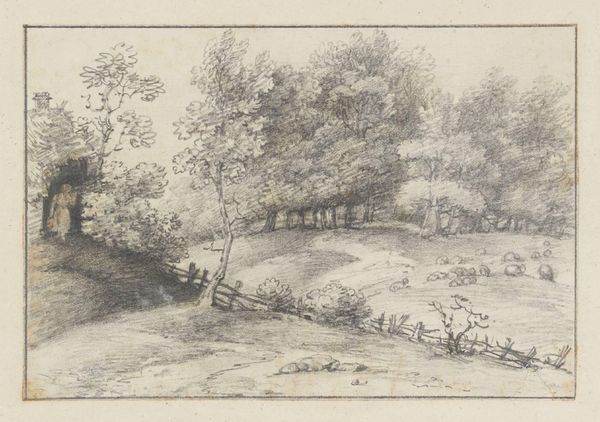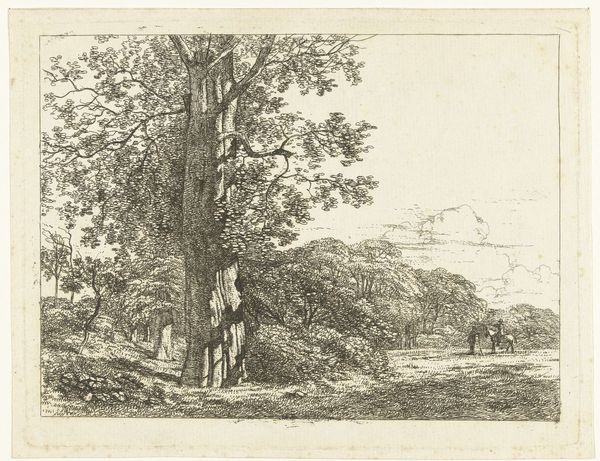
drawing, etching
#
tree
#
landscape illustration sketch
#
drawing
#
pen sketch
#
etching
#
landscape
#
etching
#
personal sketchbook
#
romanticism
#
pen-ink sketch
#
botanical drawing
#
pen work
#
sketchbook drawing
#
botanical art
#
initial sketch
Dimensions: height 166 mm, width 217 mm
Copyright: Rijks Museum: Open Domain
Curator: Here we have "Rij bomen," which roughly translates to "Row of Trees," an etching dating to sometime between 1796 and 1856, and created by Reinierus Albertus Ludovicus baron van Isendoorn à Blois. Editor: It's delicately rendered; almost dreamlike. The composition is quite simple, a row of trees receding into a vague distance. A very subdued atmosphere. Curator: Absolutely. Landscape as a genre during this period became inextricably linked with notions of nationhood and identity. How do you think that intersection is revealed here, considering his identity as baron? Editor: Well, focusing on materiality and class—barons would commission art demonstrating stewardship of lands they owned but never tilled themselves. Etchings, which involve specific chemical and physical processes, made printing widely and rapidly available, signifying power. Curator: And that distribution is significant! The relatively inexpensive nature of etchings compared to painting made the consumption of landscape imagery more democratic. Editor: A subtle act of enfranchisement to distract and maintain current structures. But note how carefully delineated those leaves are; they contrast sharply with the vagueness behind them. The materials and their distribution support this vagueness for mass distraction, which creates a division between idealized and practical life. Curator: An intriguing tension between access and ownership that absolutely permeated Romanticism. And how artists depicted land – and for whom – undeniably served to shape those emergent concepts of nationalism. The visual encoding of power in representations of nature! Editor: Exactly. And how easily that power gets packaged and consumed through relatively accessible prints and etchings is precisely where material study exposes class disparity. How do you think it plays into present notions of nationhood? Curator: We still grapple with issues of land rights, resource allocation, and the legacy of colonialism. This idyllic landscape prompts crucial questions about whose perspectives are privileged in visual culture and who gets excluded, perpetuating the marginalization. Editor: Right, even such seemingly simple work, as such demonstrates complex consumption that remains deeply relevant when thinking about resource accessibility, as such. Curator: It's precisely through dialogues like these—linking historical contexts with contemporary realities—that we make art speak to our present, thereby illuminating urgent contemporary socio-political matters. Editor: To view the landscape represented and consider where we each, ourselves, as consumers, are placed within this narrative that continues developing.
Comments
No comments
Be the first to comment and join the conversation on the ultimate creative platform.
